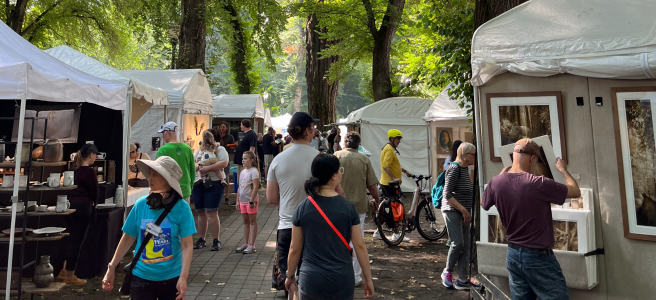Art festivals are too often more festival than art. Too many are filled with corn dog stands and ice cream trucks, dotted with custom t-shirts, photographs, and wood cutting boards. They are a great place to get a snack or have a day out with the family, pick up a themed kitchen towel, or have your caricature drawn.
In fact, one local art dealer told us Art in the Pearl started as a food-focused fair in the 90s. It evolved and expanded to what it is today, a juried art and craft festival featuring about 100 artists out of hundreds who apply.
We headed out to see if the festival was a serious destination for art.
We first stopped at Samuel Hoskins, a young painter who just came back from Italy graduating from the Florence Academy of Art. A Salem, Oregon native and resident, Hoskins brought portrait studies, stilllifes, landscapes, and pencil sketches.
While his charming landscapes look to be from the land of olives and chianti, several on the website are of Oregon scenes. It’s the portraits however that are the show stopper. A few studies are copies from Velasquez and complimented by smaller and more relatable contemporary portraits. They all seemed to revolve around a large self-portrait dressed as a medieval traveler or saint, also featured on the business card. “We were all required to do self-portraits. I had to spend a lot of time looking in a mirror to capture the pose,” Samuel told us. Somehow, the highly skilled classical realism seemed to resonate well in the festival. The booth was packed and the artist could hardly spend time chatting with the line of customers. On our second visit the next morning, many of his portraits and sketches had sold.
If Samuel is to become a well-known artist, the self-portrait would be one to own. One of the best examples of his work and priced well, Samuel may have taken it home to Salem. If that’s the case, it and other works are available from his website.
A few booths further, we talked to Angelina Kidd, who made tin-type and ambrotype wet-plated photographs. She brought her starter camera to educate the public about the process of wet plate collodion. She pointed to a photo of her, “This is my equipment. The lens is from the 1850s but the stand was custom built.
It’s hard to make period photography techniques seem relevant. Angelina did a good job pleasing festival-goers with images of staged toy animals. She was particularly proud of a sea turtle that looked like it was swimming. Motion is not something these primitive cameras could capture.
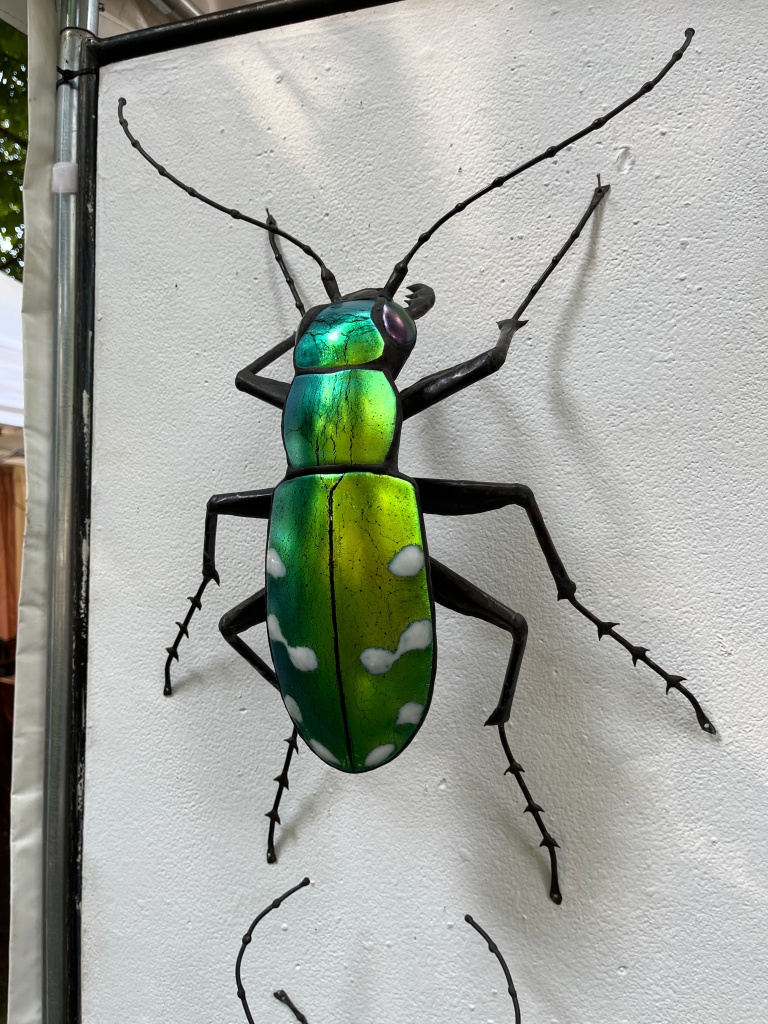
There was a good bit of glass and ceramics at the festival, as well as stone carving and metalwork. We were surprised by Sean Goddard’s insects. Made of metal and glass, those bugs are often enlarged and mixed with real-life detail and artistic imagination. They are at once alarming, eerie, and seductive. Their antennae, elongated and curvy, make them seem much larger. Their wings, made of fused glass, have an iridescent glow.
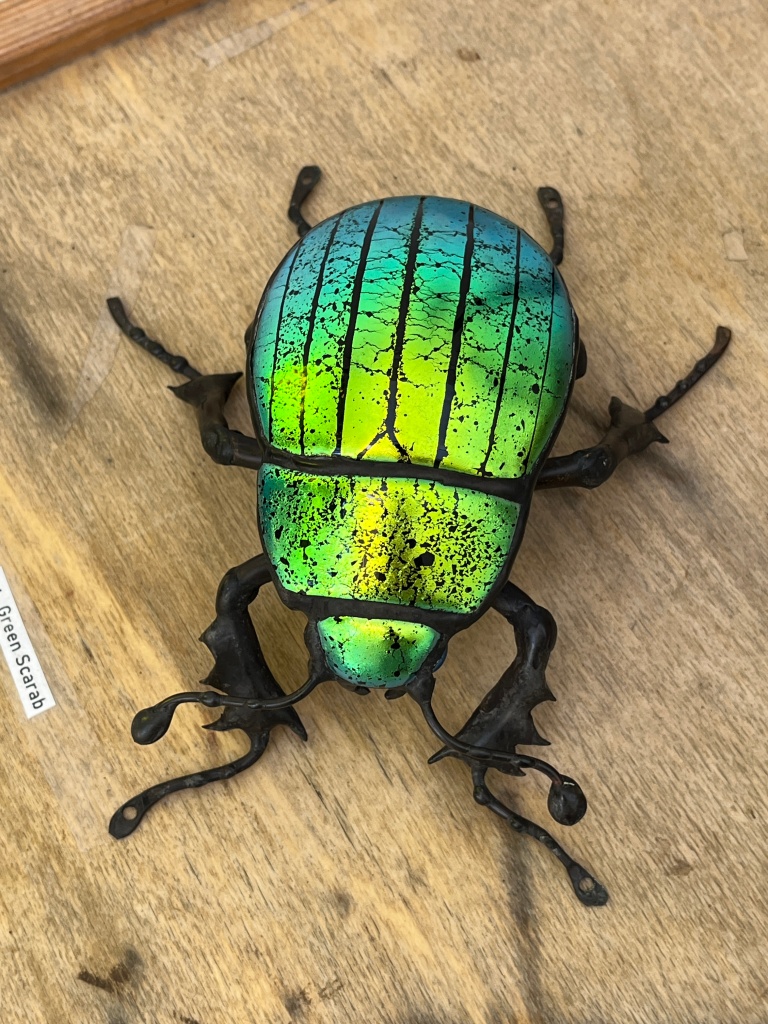
Sean is faithful to the anatomy but admits the colors are not from nature. His artistic license allows him to create vibrant colors that charm the public. It may be the metalwork that sets them apart, however. The more antennas and legs, the more they look like they could crawl, jump, or fly at any moment.
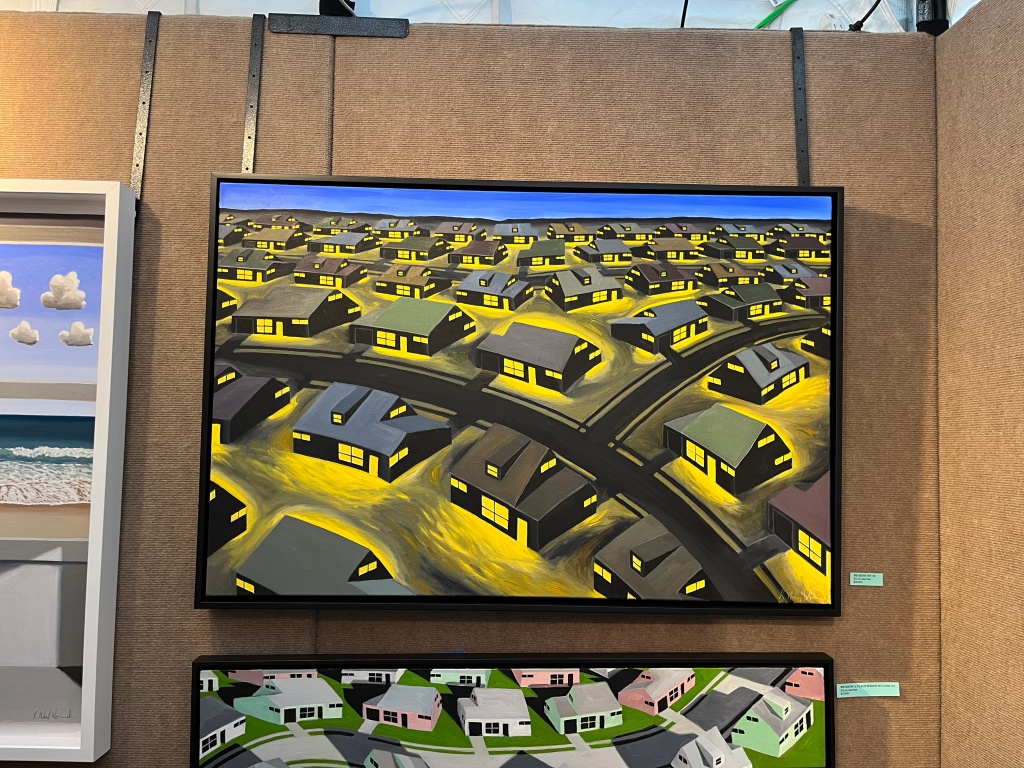
Michael Wommack is one of the few first-time exhibitors in the festival. With roots in his childhood in Levittown, Pennsylvania, he paints a stylized suburban sprawl with a dreamy quality and intensified hues in pastel. In one of the works, houses are lined up just like what they may look today – except all the backyards are connected. “There was a no-fence ordinance. As a kid, we could run from one yard to the next.” That connected patches of grass uniformly lit in bright yellow, delineated by the curvy roads, creating a heightened sense of scale for the neighborhood. Wommack lets viewers inject their own sense and sensibility toward suburban landscapes.
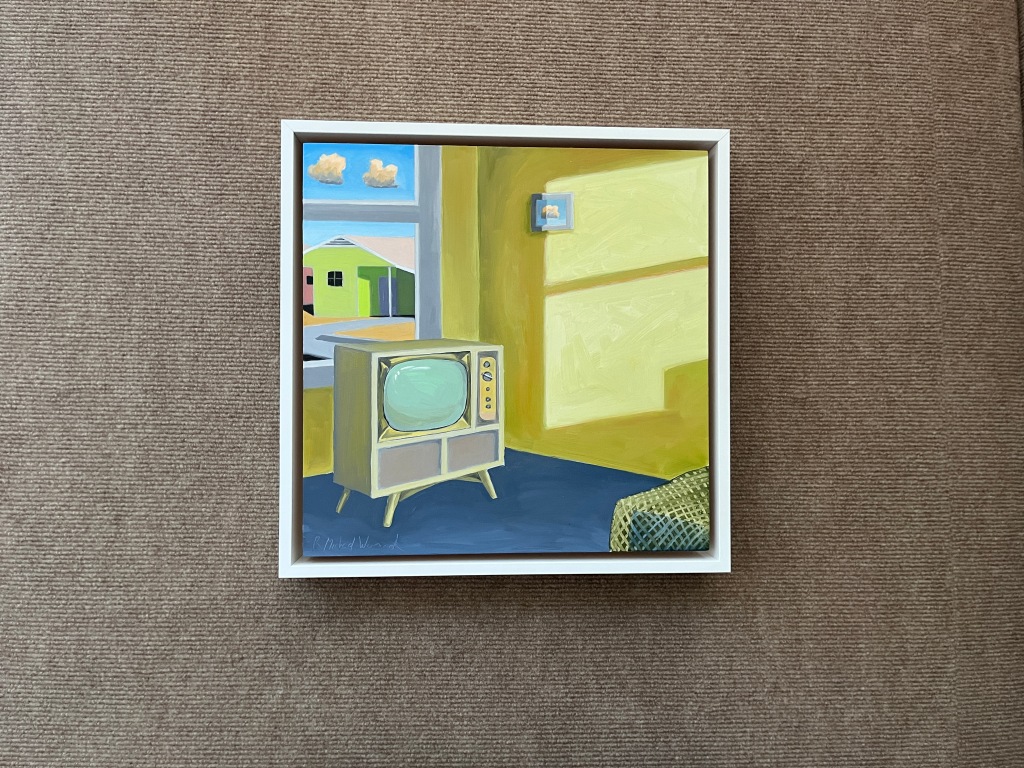
Michael spoke about the colors and the challenges of working with pastels and oil. Many of the images were of imagined interior scenes furnished with vintage sofas and lamps and he visits local antique malls for examples. Particularly striking were works with glowing backyard pools. Certainly, not every home has a pool, but the mind’s eye can help create anything it conjures. The glow is one confined to pastel, however. It pops even when hung in dark hallways and it’s not an effect he’s been able to re-create with oil.
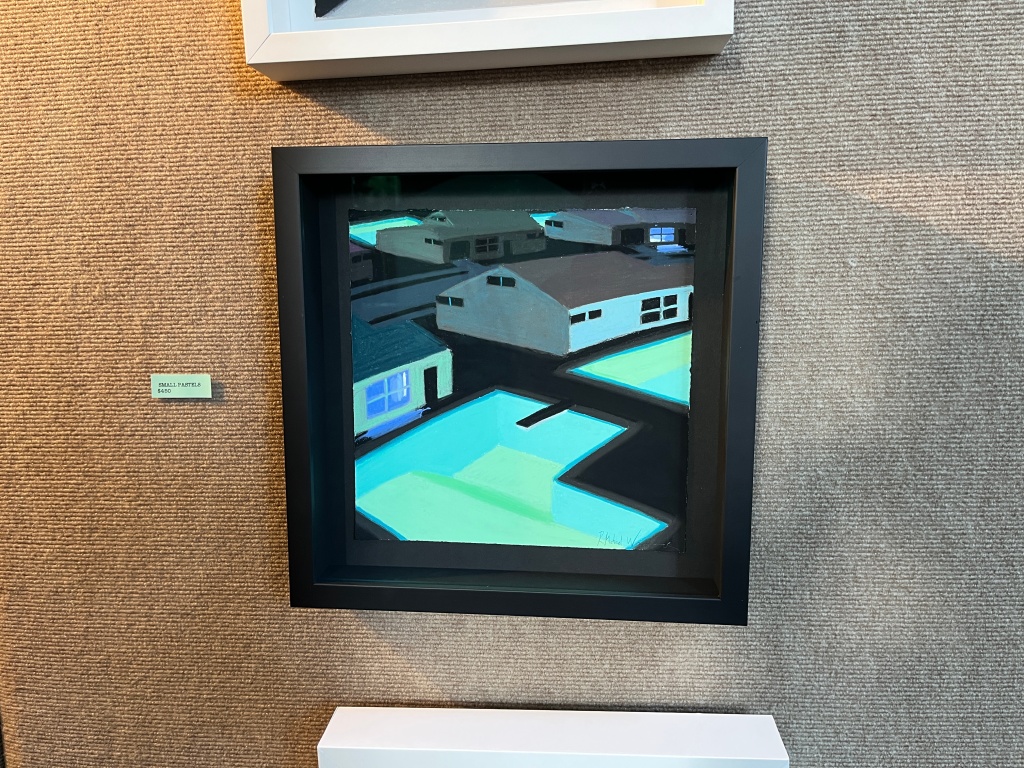
We learned from many itinerant festival-bound artists who travel between cities during the summer and have the rest of the year to create more work. It’s a divergent path for the artist who wants to personally engage with the public and enjoy the immediacy of being a small business craft person. It’s also a lot of time on the road.
Once the stock is gone, they have to take orders/commissions and produce/ship later. Such is the case with Sean and his insects. One of the beetles on display has been “sold” a few shows ago. He offered to make a similar one, even with a custom color.
I suspect many of the artists here are leaving today with a lighter load. Art in the Pearl, 2024 edition, is certainly an event to look forward to.
Discover more from Urban Art & Antiques
Subscribe to get the latest posts sent to your email.

